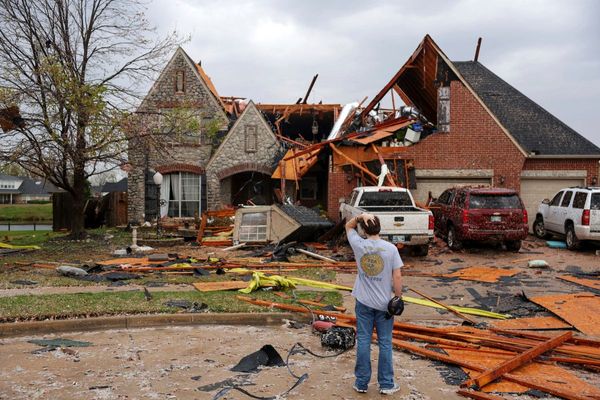On Friday, Mayor Brandon Scott met with some of the many people who keep good things happening in Baltimore to herald the return of Fourth of July fireworks to the Inner Harbor for the first time since the pandemic.
Great news.
Except the next night, there was a shooting in the Inner Harbor amphitheater, leaving a 17-year-old boy dead, a teen girl wounded and people scrambling to get away. A fatal shooting in such a high-profile location stirs more dread about safety in Baltimore. And I’ll bet some city and county residents, who might have been pumped about watching fireworks from the promenade again, scratched that idea off their summer schedules.
I’ve heard enough gloomy hyperbole from the suburban doomsday chorus to be sure that the amphitheater shooting affirms what they’ve been saying since the Freddie Gray spring of 2015: The city is lawless and lost. If I had to summarize the refrain of the chorus, it would go something like this: “We used to come to Baltimore a lot, but now, between the squeegee ‘kids’ and all the shootings, you couldn’t pay us to come downtown.”
But to these people — actually, to anyone who hesitates about visiting the city — I have to ask: When it comes to gunfire, do you feel safe anywhere?
It should be clear by now that, in city or suburb, at a concert, in a school, church, synagogue, mosque, movie theater, nightclub or supermarket, we’re all vulnerable to gunfire.
This is America, armed to the teeth. There are an estimated 400 million guns in private hands — guns that were manufactured, sold and resold, some lost, some stolen. According to the Mass Shooting Tracker, we have had at least 16 more mass shootings (four or more people shot in one incident) since the massacre of 19 children and two teachers in Uvalde, Texas, a week ago.
The Centers for Disease Control and Prevention says this: “In 2020, there were 45,222 firearm-related deaths in the United States — that’s about 124 people dying from a firearm each day. More than half of firearm-related deaths were suicides and more than 4 out of 10 were firearm homicides.”
We have arrived at an awful place in the nation’s history — a violent epoch marked by gun deaths from suicide, everyday violence and mass shootings.
In Baltimore, we have had everyday violence for decades. Some of it is related to drug trafficking and gangs. Some of it is related to personal grievances that result in revenge killings. Sometimes gunfire erupts between domestic partners. Sometimes it’s nothing more than boys trying to be men.
Just as having a military-style rifle marks the identity of some Americans — a rite of passage for young males, in particular — having a handgun marks the identity of others.
And while the guns are very different, they achieve the same deadly results — assault rifles through mass killings, handguns usually one victim at a time.
Public reaction to these forms of violence vary greatly. We are naturally far more sympathetic to children gunned down in classrooms than we are to drug dealers who die in the streets. We’re shocked — if we’re still capable of being shocked — when eight, 10 or 21 people are murdered at a time, but not so when a Baltimore police officer finds a 28-year-old man dead from multiple gunshot wounds in West Baltimore.
I ask you, really, what is the difference in terms of impact?
People die. Thousands of lives are needlessly lost, and we are all diminished by this incessant violence.
The question we need to ask ourselves is this: Do we want to live this way forever, with the fear of being the victim of a mass shooting in a public place or the fear of being the victim of a street shooting?
Guns — legally purchased or illegally acquired — make all this suffering and death and fear possible.
Baltimore’s problem, the persistently high per capita homicide rate, is due to the availability of guns. You can say the city has too many people engaged in criminality. You can say it’s a lack of supervision of those on parole or probation. You can say we don’t have enough police officers. You can grandstand like the governor of Maryland and, with little foundation, blame lenient prosecutors and judges. But if the criminally-inclined did not have guns — if guns were not so abundant and available — we would still have crime, but not as many shootings and homicides.
Impulsiveness, anger and retaliation are big drivers of gun violence. Twenty years ago, rival drug dealers might have gone to war over sales territory. Today one might shoot another over a poor choice of words. A gun makes that possible.
Canada has made a big move against military-style assault rifles and vows now to stop sales of handguns and cap them at the number already in the country.
That all strikes me as a great idea for this country. However, like most Americans, I am pessimistic that Republicans in Congress would agree to a bold move like that.
Still, public opinion is on the side of those of us who want to see a ban on the sale of assault-style rifles again, so maybe there will be a breakthrough this time.
Even so, short of a freeze like the one Canada proposes, we will still be left with a massive amount of handguns, and with the everyday violence that causes suffering, death and fear. We should not have to live like this.







